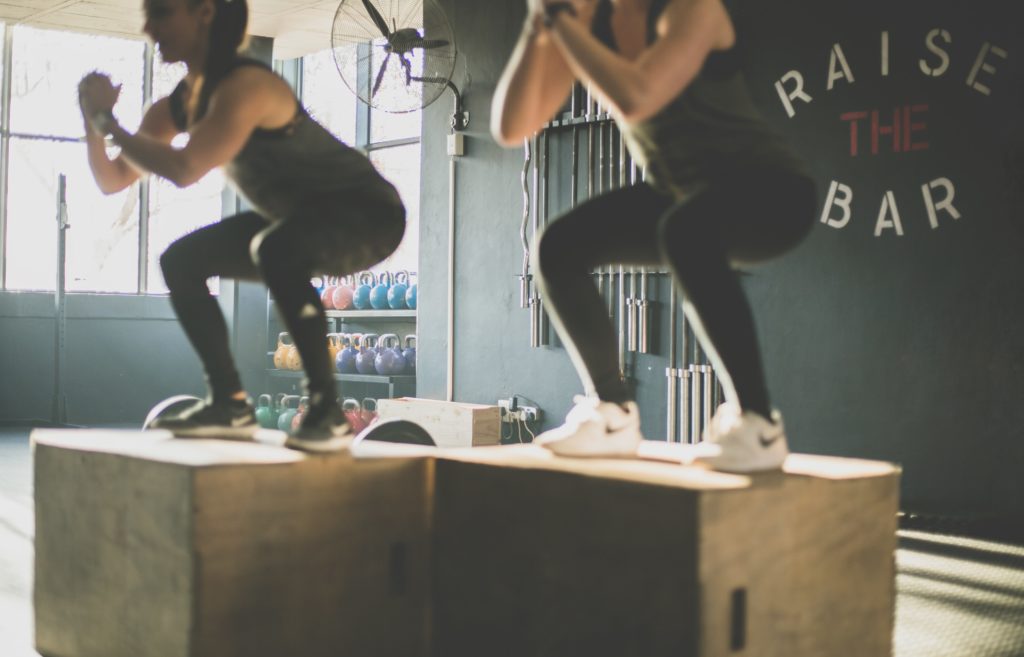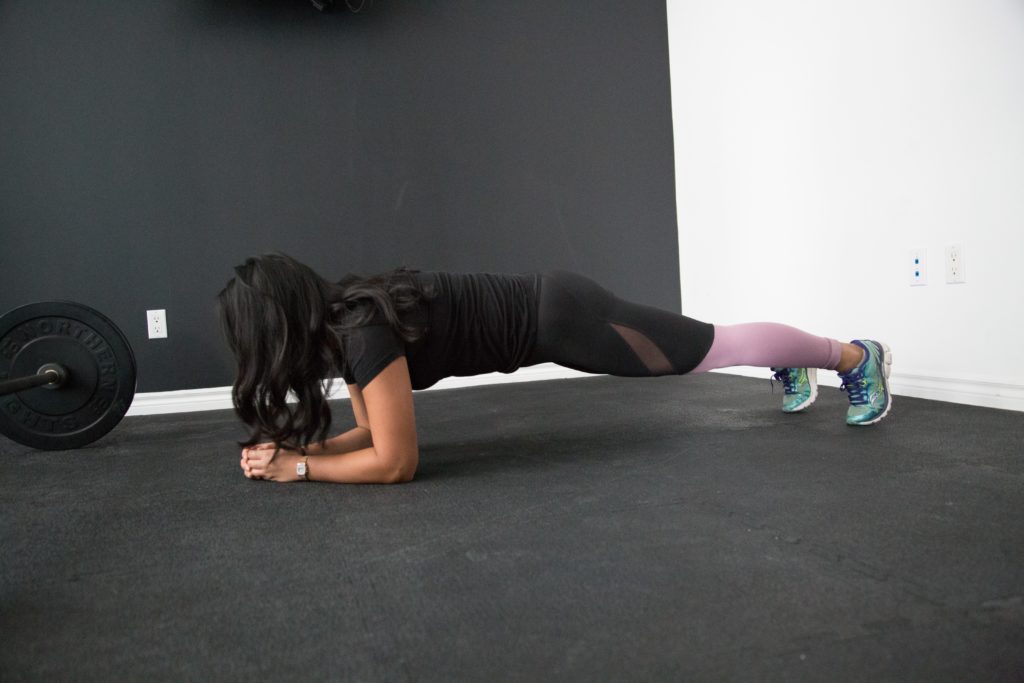Waist training is a gradual process of waist reduction using a steel boned corset. Also known as waist cinching or tight-lacing. The practice came to prominence in Victorian times but has made something of a comeback in recent years.
How Do Waist Trainers Work?
By wearing a tight-laced corset while exercising and eating a healthy diet can, over time, radically reduce the waist size of any man or woman. It’s not an overnight fix, and waist training requires commitment, and you’ll need to give it more than simply wearing a corset for a few hours a day. We’ll get real with you, it’s not going to be all fun and games, but if the result you crave is a more defined, smaller waist, it’s worth giving it a go. On top of wearing a corset, you’ll need to undertake a healthy diet consisting of smaller more regular meals (as the corset will restrict how much you can eat comfortably). Waist training is best achieved when the following 3 components work in harmony:
- Waist Cinching using a traditional steel-boned corset
- Healthy Diet
- Regular Exercise
Results will be slower and harder to obtain if the 3 major components are not practiced as a gradual programme of modifying the shape of the body. So, what are the steps to follow for correct waist-training?

Waist Training – Starting Out
We advise all novices beginning their waist training, female and male to choose an under bust corset rather than a full corset that covers the bust. A person’s body must become accustomed to the constriction of tight-lacing and we promote pleasurable wearing of corsets. If you try to do too much too soon or jump to a full corset you may find your initial experience a very uncomfortable one.
Begin with a corset that is 4 to 5 inches smaller than your actual waist measurement. To measure your waist, look in a mirror and measure the narrowest part of the waist; with females this is usually just above the navel by an inch or two and for males it is usually just at the bottom of the navel. If your actual waist measurement is 34” for example, then you order a 30” corset. Over time and once the corset is gradually broken-in you will be able to close the corset so that you are obtaining a full 4 inch cinch/reduction. Corset stores like www.GlamourBoutique.com already do the computation for you in their size selector i.e. it will say something like: ’30 inch corset for an existing 34” waist’.
A new corset must be broken in otherwise you can damage the garment. The first few weeks of wearing the corset you must not over-cinch. Tighten the garment evenly until it is ‘snug’ but not tight. Corset panels are stiff when new and along with the flexible steel bones, must be allowed to mold themselves and change shape according to where your ribs and hips are. This takes time and if you rush the process you will either hurt yourself or ‘pop’ a steel bone or panel seam. Once the garment is worn-in you can then begin to tighten a little more each time you wear the corset until you have reached your comfort level. This may take months and at that point you should be wearing the corset fully closed so that you have achieved a full 4” cinch. Now you can progress to the next size down corset as part of your continued waist-reduction regime. Bear in mind that individuals body shape’s are different and you may not be able to fully close the corset. Bone cannot be cinched and you should not attempt such a feat – again the result will be a damaged corset. Everything should be done gradually and in moderation.
How Long Should I Wear My Waist Trainer For?
To begin with, try to wear the corset 3 to 6 hours a day where possible. We do not advise sleeping in a steel boned corset but at all other times of the day (apart from obvious breaks for bathing etc) as long as it can practically be part of your routine then it is a good discipline.
What Results Can I Expect When Waist Training?

Results will depend on how frequently you wear your corset and how disciplined you are with regards eating a sensible (not strict) diet and exercising occasionally but many start to see results in a matter of weeks. The following is an email from a recent first-time purchaser of a steel boned corset from Glamour Boutique:
“I have been trying to lose weight, especially inches on my waist for years. I keep getting to a plateau. I was a zero in in my early 20’s a two years after my first pregnancy (age 25), a 6 after my my thyroid died (age 30), and a 10 after ‘losing weight’ from my second pregnancy (age 35), I started corset training 9 days ago (age 40). I weighed 153.2 lbs after a 3 month diet, I lost maybe a pound. Here are my before and after measurements from before I used the corset to only 9 DAYS LATER:
before – after
38.5 – 38.5
34.0 – 31.5 (-1.2 inches)
39.0 – 38.5 (-0.5 inches)
153.2 lbs – 147.8 lbs
I used Phentramine after not being able to get the weight off after my second pregnancy. It cut my cravings, prevented me from being tired, helped me lose the weight, and was highly addictive. I feel the same about corset training, but NO DRUGS. Besides, phentramine just screws up my thyroid even more. I don’t get snacky, I only want small meals, and I don’t get tired. A few days ago I decided not to wear my corset to work all day because I wanted to wear it that night when I went out with my husband. I got snacky, tired and needed to take a nap before going out. I cinch it myself most days but I find I get a better cinch when my husband helps.
Thank you so much for your product. It is high quality and surprisingly comfortable.
Thanks, Stephanie”
Maintaining Your Waist Trainer Corset
 If you are serious about waist-training then it is very important to look after your corset; over time they take a lot of punishment from regular cinching but if you take some simple precautions you can extend the life of the garment:
If you are serious about waist-training then it is very important to look after your corset; over time they take a lot of punishment from regular cinching but if you take some simple precautions you can extend the life of the garment:
- Always wear with a liner or tight camisole/t-shirt. Even the most genteel lady will perspire in a corset – wearing a liner will protect the corset lining from much of the moisture and body oils in particular
- Air Dry your corset at the end of the day. Corsets must be dried out by turning the lining to the upper side and hanging over the back of a chair. Never hang on or near a heat source as over time this will cause shrinkage and eventual damage to the stitching
- Alternate Corsets. Rather than buy one very fancy corset, purchase 2 moderately priced, strong corsets and alternate them so that each corset gets to ‘rest’ between each wearing
- Consider protecting the outside of the corset by spraying a protective coat of Scotch Guard
- Cleaning. From time to time you may need to wipe clean the outside or the liner with a damp cloth. If the corset needs a thorough cleaning then it must be done at a dry cleaners – ensure they have experience of cleaning such articles. NEVER wash your corset.
Follow these simple tips for maintenance, break the corset in gradually and you will have a corset that lasts a long-time; a little bit of care goes a long way where corsets are concerned.

How to Choose a Corset or Waist Trainer for Men
Only a traditional steel-boned corset can obtain a cinch of 3 to 5 inches and such a garment must be well constructed using flexible steel-bones and wider steel busk plates at the front for the fasteners which take a good deal of the pressure from tight-lacing. Be sure that such a garment has full cord lacing at the rear and that there is a strong ‘exposed’ tape circling the lining of the corset for added strength. Laces should be guided through traditional steel grommets.
Materials for outer panels and inner lining will vary but we recommend corsets with 100% cotton lining so that the corset is breathable. Outer material may be of silk, leather, pvc and the most common, satin. Always bear in mind that lighter colors will dirty faster than plain black satin, for example. If you require a corset for tight-lacing i.e. to reduce your waist either in the short-term for the obvious esthetic effect or as part of a continued tight-lacing regime to alter your body-shape then do not consider corsets with ‘plastic boning’, or garments that have zippers or ribbon instead of strong traditional cord lacing. Such garments are made to look pretty but are not made for tight-lacing.
What Else Can I do Besides Waist Training to Reduce my Waist?
In order to boost your results you can simply include as little as 20 minutes exercise 2 times a week and a little modification to diet to max it out. We’ve covered the basic principles of Waist Training in Corsets before but not really elaborated on suggestions for some simple exercise and diet modifications. The following are simple to implement even for the less-fit person and will add greatly to your waist (and weight) loss over time when done consistently.
Many of us spend most of our working day at a desk. We drive to work, take elevators and do whatever we can to save time in our busy days. However, there are many opportunities in the day where we can probably ‘plant’ some extra physical activity, simply and effectively which if we do on a daily basis will help with overall fitness levels, increase metabolism and lead to some calorie burning. Such examples are parking the car at a parking space further away from your intended destination so you have to walk further to work, for example. Take the stairs where possible instead of the elevator and at least every 20 to 30 minutes break away from your desk and take a brisk stroll even to the washroom.
Get in the habit of walking faster so that you actually get the heart pumping to give it some exercise. If you find it very hard exercising or going to the gym then at least structure some longer walks in to your week. If you are a morning person then get up 30 minutes earlier and take a brisk 20 to 30 minute walk every morning before you set off for work. If you want to work a little harder, you could also add in the following exercises to your routine:
Push Ups
For the novice we recommend lying on the floor face down and planting hands on the floor, shoulders apart. Keeping knees on the ground push up until the arms are straight and then slowly return to the ground. Make sure the abdominal muscles are taught and that the fanny muscles are clenched to maximize the effort. Do 10 repetitions to start and do 3 lots of 10 repetitions. Over time you can increase the repetitions and even start to do full push-ups where the knees are also straight and lift off the floor too.
Squats
Squats are a great way to increase core strength in the abdomen and lead to a leaner and fitter waist line. Stand up straight with legs a little wider than shoulder-width apart. Keeping the top of the body upright and abdomen muscles taught, bend the knees into a full squat. If you need help with balance do in a doorway so you can touch the doorpost for balance as and when needed. After squatting you then slowly return to a standing position. Repeat 15 times and do 3 lots of 15 repetitions. Over a number of weeks you should be able to build up the number of repetitions.

The Plank
This is a great exercise for building up core strength and toning in the waist area. Lie on the floor face down. Position elbows shoulder width apart on the floor and lift the lower abdomen off the floor keeping the knees on the floor. You are now resting on knees and lower legs and your elbows. Clench the fanny muscles and keep the abdomen taught and hold in this position for 60 seconds. Slowly lower to the ground after 60 seconds. Repeat 3 times. Over time build up to 3 repetitions of 120 seconds each. Then to make it harder lift the knees off the ground too so you are only resting on elbows and your toes.

So, whether you just want to reduce your waist in the short term or you intend to embark on a gradual waist-reduction regime then the only garment that can truly undertake the rigors and give you results from day one are traditional steel-boned corsets. Remember, for longer term permanent waist-reduction a corset should be used in conjunction with healthy diet and moderate, regular exercise. Follow the simple guidelines and you will have a rewarding experience over time. If you have any questions about corsets or tight lacing then please call us on 1-973 226 5588 1-973 226 5588 and we’ll be glad to help you.
